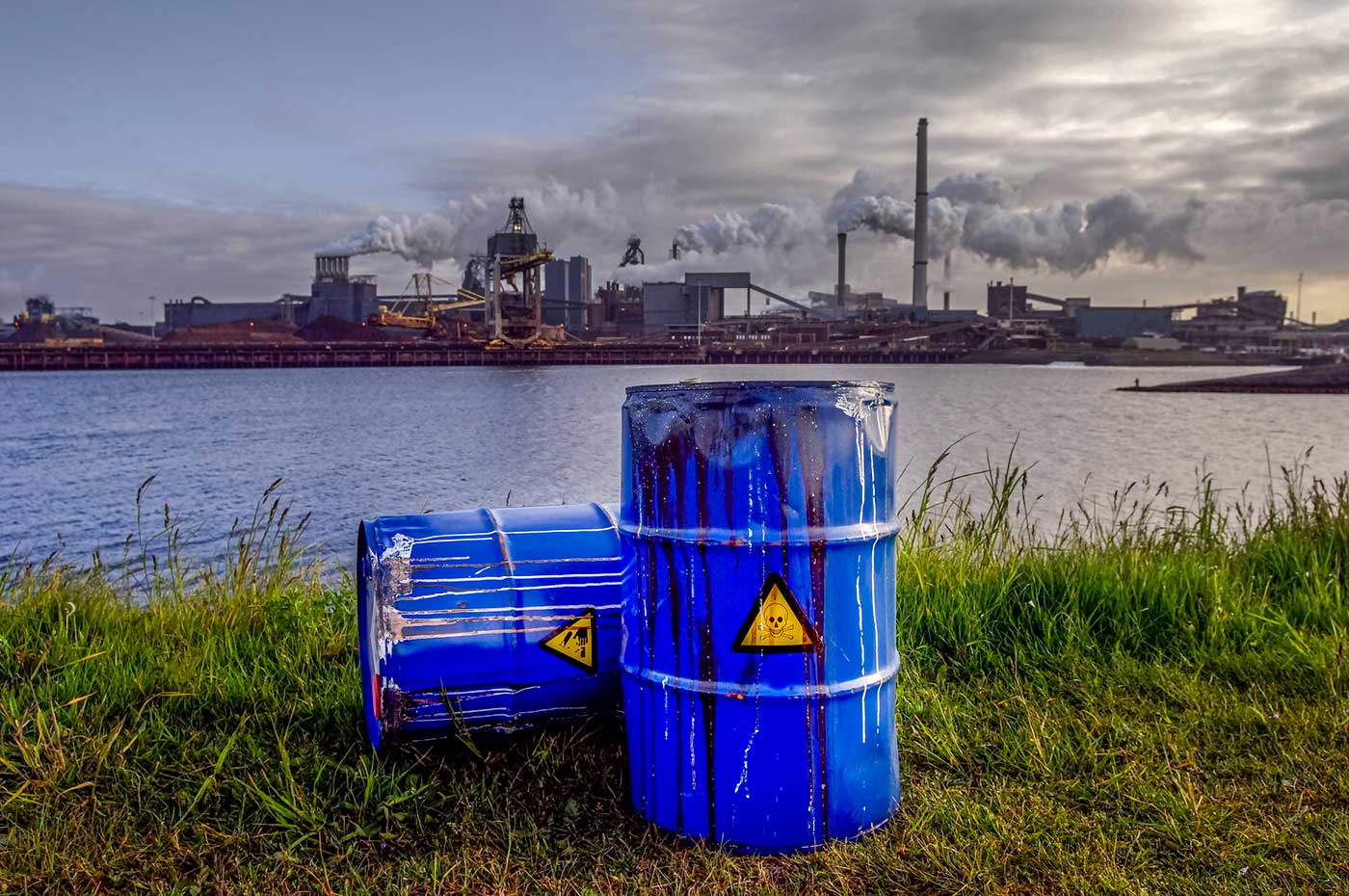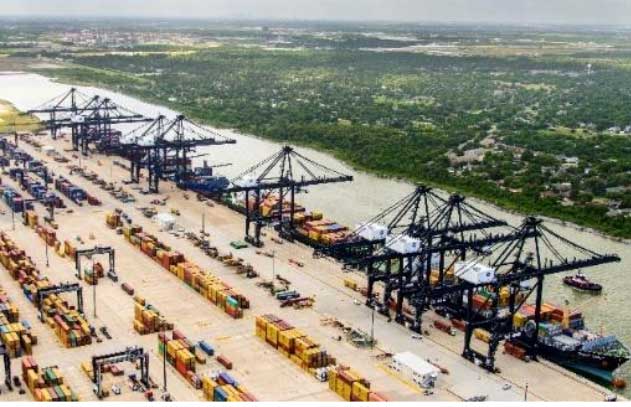
The Harris County district attorney's office in Houston, Texas, is busy these days with more than the usual run of local crimes. Last year it obtained a criminal indictment against Arkema, a chemical producer in the town of Crosby, for injuries related to release of a toxic cloud. “The facts show Arkema knew of the dangers, withheld vital information, and unleashed harm on first responders and the community,” D.A. Kim Ogg alleged. “This felony indictment is a wake-up call to companies that would pollute our air and waterways, ignore best practices in safety, and put our communities at risk.”
Another action against Intercontinental Terminals Co. (ITC), a petrochemical storage company in Deer Park, resulted from a fire that burned for four days and released contaminants into the air. Ogg sought fines of up to $100,000 for each of five water pollution charges, saying that people in nearby residential areas “deserve protection too. When public health is at risk, it's a public safety concern.”

Such incidents, of lesser or greater magnitude in environmental impact, are daily concerns in the region. Based on data from 2009 to 2015, Houston, the fourth-biggest U.S. city in population, was ranked by the Occupational Safety and Health Administration as the most dangerous for workers.
The bustling industrial landscape, especially along the Houston Ship Channel, exposes the population to high levels of environmental, health, and safety risk - and its many energy-related companies to potential litigation and regulatory actions.
Many industrial companies, particularly those involved in production of oil, gas, resins, plastics and other, derivative products, have a footprint in and around Houston. The transportation infrastructure of port facilities, arterial roads and highways supports a robust supply chain. Newspapers regularly report on explosions, marine collisions, air pollution, chemical fires and hazardous spills.
Crucial Waterway
The Houston Ship Channel is 50 miles long and 533 feet wide. It is one of the country's busiest shipping lanes and a boon to the region's energy ecosystem.

According to the U.S. Energy Information Administration, on average since mid-2017, the port district of Houston-Galveston has accounted for slightly more than half of the crude oil exported from the U.S., and the share hit a record 70% in May 2018. In fact, the Port of Houston handles more international marine cargo tonnage than any other U.S. port; petroleum products traveling out of Houston tripled from 2017 to 2018. The port's container activity rose 11% in 2019 to a new record.
Yet adverse safety incidents occur repeatedly in areas around the channel and ports of Houston, Galveston and Texas City, as one law firm has documented. The National Transportation Safety Board reported on at least five major marine incidents there in the last three years.
In May 2019, a 755-foot tanker, MV Genesis River, and the tug Voyager collided in the Houston Ship Channel near Bayport. The frequency of marine collisions led the Port of Houston to limit the transit of container ships larger than 9,000 TEU (twenty-foot equivalent unit cargo capacity) to once a week through the channel.
Pattern of Accidents
There is a long history of industrial accidents and worker casualties.
In 1989, petrochemical explosions at a Phillips 66 facility resulted in the deaths of 20 oil and gas workers and injuries to more than 300. Ten years later, an explosion at a Phillips Petroleum K-Resin plant injured three workers and killed two contractors. In 2000, that same plant experienced another explosion, injuring 70 and resulting in one fatality. And in 2005, there were 170 injuries and 15 fatalities in an explosion at BP's Texas City refinery.
The Environmental Integrity Project, a nonprofit that advocates for more effective enforcement of environmental laws, highlighted one incident: “In Crosby, Texas, about 20 miles northeast of Houston, an explosion and fire at the KMCO specialty chemical manufacturing plant on April 2, 2019, led to the death of one employee and critical injuries to two others. [The location is 2.5 miles from the Arkema plant mentioned previously.] The fire was ignited by a 'sudden acute failure in a piping component' that released isobutylene, a flammable petrochemical product, according to a company statement.”
This was after KMCO was ordered in 2008 to pay $100,000 in civil penalties for fumes from the Crosby plant that caused health issues with nearby residents. The Houston Chronicle uncovered more safety violations. KMCO was subsequently fined $38,000 for improper air and water emissions accountability - another blot on its record prior to the April 2019 incident.
Plastics and Carcinogens
Plastics, a growing concern in terms of global environmental impact, are significant in the Houston petrochemical landscape. An Environmental Integrity Project report, Plastics Pollution on the Rise: Growth of Houston-Area Plastics Industry Threatens Air Quality and Public Safety, described the Texas and Louisiana Gulf Coast as “one of the world's fastest-growing centers for the manufacture of plastics, and Houston is at the center of that region. This capital of the chemical industry is undergoing a plastics renaissance thanks to the proliferation of hydraulic fracturing and the availability of cheap natural gas, from which petrochemical plants derive the ingredients for plastic products. This rapid expansion, however, comes with serious side effects, including more hazardous air pollution and increased safety risks to workers and nearby residents.”
The report cited a July 2019 fire “at the ExxonMobil Baytown petrochemical complex just east of Houston in a unit containing propylene, an extremely flammable material used in plastics. Thirty-seven people suffered injuries in the explosion, which released 14,103 pounds of benzene and 25,938 pounds of butadiene, 1- 3, carcinogenic air pollutants with many negative health effects.”
Benzene released in the May 2019 collision of two vessels and product spill was at levels 14 times greater than allowable limits.
The Texas A&M School of Public Health found that health risks did not come only from explosion and fires. There were, for example, damages in the wake of 2017's Hurricane Harvey. Some neighborhoods near refineries and other industrial sites along the Houston Ship Channel were contaminated with polycyclic aromatic hydrocarbons (PAHs). Other research revealed that water was contaminated with lead in residential areas along the channel.
According to the Environmental Integrity Project, loopholes enable lax enforcement. Companies are able to argue that they are not liable for air pollution because of “malfunctions or unplanned maintenance.” The report states: “From 2015 to 2017, Texas imposed penalties on only 7% (57 out of 872) of these unpermitted pollution releases from the Houston area plastics plants, according to state records. These 872 incidents released 11 million pounds of air pollution. However, the 57 fines totaled only $665,172, which means a penalty of only about 6 cents per pound of illegal pollution.”
There is thus a lack of incentive for operators to act with judicious care and prevention. The risk of fines and enforcement is less than the economic benefit of taking the risk.
Fiscal Costs and Accountability
There have been liabilities, to be sure. A 2014 explosion at a Georgia-Pacific plant in Corrigan, which caused two fatalities and four injuries, resulted in a $39.7 million verdict and award to a man who was injured. The Texas Attorney General sued ExxonMobil for some 20 million gallons of contaminated water spilling into the Houston Ship Channel and emission of “multiple air contaminants” in the wake of the Baytown fire - an action on top of a Harris County lawsuit alleging Texas Clean Air Act violations.
While Port Houston has an environmental management program in place, Andrea Bonime-Blanc, CEO and founder of GEC Risk Advisory and author of Gloom to Boom: How Leaders Transfer Risk into Resilience and Value, contends that it takes considerable public and/or private commitment and collaboration “to avert even greater disasters than have already occurred.
“There must be a strong private-public partnership throughout the region around these key issues of environmental, health and safety [EHS],” she says, “given the fast pace of business growth and what appears to be a concomitant absence of EHS preventative risk management measures.”
Bonime-Blanc says the region and its stakeholders play a role in both the risk and its mitigation.
“There are at least four deeply intertwined and interconnected business, government and community objectives that this scenario presents,” she explains. “First and foremost, the health and safety of key stakeholders: the community, employees, contractors and customers. Second, the preservation and protection of the environment. Third, the survival and continued thriving of the multiple business sectors throughout the region. And fourth, the government's interest in maintaining and enforcing both civil and criminal health, safety, environmental and related laws, local, state and federal.”
“Resilience-Building Plan”
Bonime-Blanc advocates for a government-sponsored risk assessment “focusing like a laser beam on the EHS impact and dangers presented by this enormous growth of business that in turn threatens the EHS well-being of the community and environment.” The risk assessment, she says, should go beyond “checking boxes” and produce “an actionable regional plan that provides guidance to key actors: businesses, third parties, and affected communities, local governments, and municipalities.”

When it comes to energy production, its logistics, and the risk imposed on the community at large, public-private partnership efforts are important to prevent and safeguard the areas and inhabitants from harm and economic costs.
“The goal overall is to create a resilience-building plan that is preventative in nature and provides solid, heavily coordinated private-public crisis prevention and management frameworks to protect the environment and ecosystems in the area and preserve health and safety of living beings,” the risk expert adds.
In 2016, the Center for Science and Democracy, in conjunction with Texas Environmental Justice Advocacy Services, published Double Jeopardy in Houston: Acute and Chronic Chemical Exposures Pose Disproportionate Risks for Marginalized Communities, an investigation not only of ESH risks across the region, but also their effects on the more impoverished communities in and around the Houston Ship Channel.
The report drew attention to a “double jeopardy” of stresses and health consequences of potential catastrophic accidents from nearby industrial facilities, along with the continuous exposure to high levels of toxicity. The disproportionate health and safety impacts “from this concentration of high-risk and heavily polluting facilities underscore the need for environmental justice for these communities.”
For an energy firm - or those who use and transport its products - in and around Houston, risk abounds. Chalk it up to a confluence of aggressive prosecuting attorneys, industrial traffic (on road, rail and water), or just plain too much production of dangerous hydrocarbons and derivative products. It's a challenge and a necessity for risk professionals to be aware of and manage the vulnerabilities and exposures.
In a December 2017 article in The New Yorker, The Dark Bounty of Texas Oil, Lawrence Wright wrote: “For more than a century, the economic fortunes of Texas have depended on oil. The image of mighty geysers spewing depreciable assets out of the ground is forever linked to the state. In the popular imagination, a rich Texan is invariably an oil baron.”
Along and around the Houston Ship Channel, such good fortune comes with responsibility and accountability.
Jim Romeo (www.JimRomeo.net) is a journalist focused on business and technology topics.